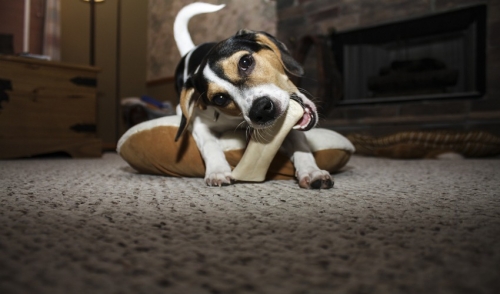
Healthy Snacking For Your Pets
The problem with keeping pets healthy is that often times they eat as much as we do. Our pets love snacking just as much any human out there. If you took the time to document how many times you snack per day, you’ll be alarmed to know your pets are not too far behind and the number is pretty high. The problem isn’t as much the frequency as it is the actual foods were snacking on. Our pet’s bodies are always metabolizing and depending on their level of activity, it’s important they are snacking on the right foods to sustain their lifestyle. Pets get snacks any way they can get it. Whether it’s your child handing him a piece of pizza to a friend giving them a slice of lunch meat, all of the snacks can start to add up on the scale. Healthy snacking is important because it helps maintain the health and energy of your pet.
In general, pet owners tend to over treat their pets. All of the extra calories that are being introduced to your pet’s diet is not safe for their diet which means it’s not safe for their health. Follow this article to learn tips on how your pet can snack healthy. The first tip is to follow the 10% rule. The 10% rule means snacking only makes up 10% of your pet’s daily calories. If you are unsure of how much that figure would be for your loved one, consult with your vet. I understand pet’s love treats and we as owners love treating them when they do something good. However, you can still treat your dog often, just don’t give more than one at a time so that it only remains a small part of your pet’s daily intake. If your pet is on the verge of becoming a pudgy pooch, then consider substituting ‘beggin strips for fruits and vegetables. Using fruits and vegetables is not only healthier, it’s also more affordable than buying snacks at the pet store that are high in fat, sugar, and preservatives. Try treating your pet with carrots, green beans, or broccoli. Vegetables have practically no calories and they allow you to treat your pet with a treat that is healthy and has a nice crunch. Fruits are also great such as banana slices, berries, watermelon, and apples. Be a little more careful when snacking with fruits as some fruits such as grapes, raisins, and anything with caffeine can be toxic for dogs.
Avoid feeding your dog anything from the table or foods that can cause gastric distress. The last thing you want is for your pet to have digestive problems. Good practices for also providing healthy treats to your pet include going natural, counting calories, and avoid treating for begging. Pets are smart and sometimes their eyes can become bigger than their stomachs. Always remember the idea treat is low in calories, low-fat, and high in protein. All of these factors will keep your pets happy and healthy.
